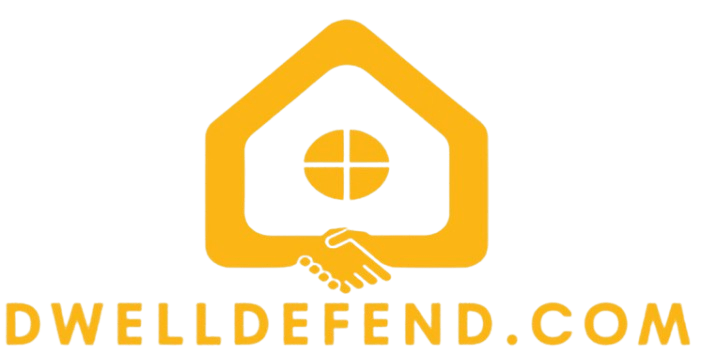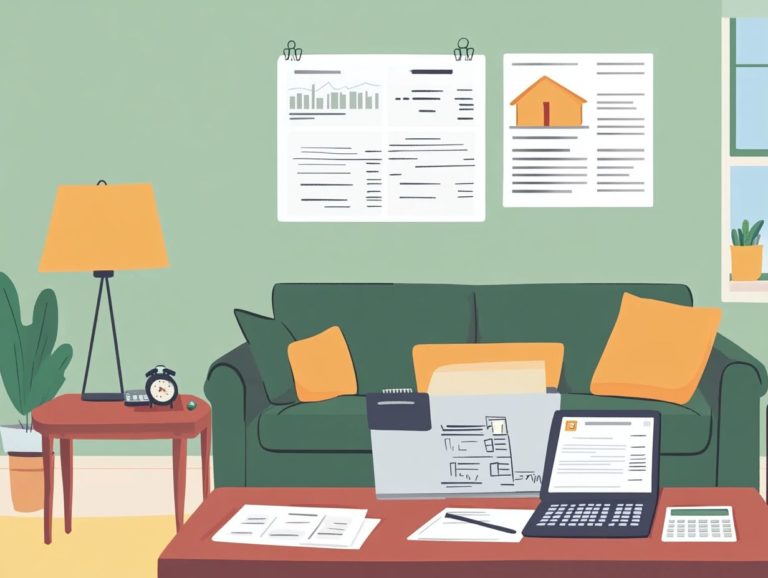What Is Home Insurance Exclusions?
When it comes to protecting your home, understanding home insurance exclusions is absolutely essential. These exclusions can leave you exposed to unforeseen financial burdens, making it just as vital to know what isn’t covered as it is to understand your policy’s protections.
This article delves into the definition and importance of these exclusions. It highlights common pitfalls and guides you through the process of analyzing your policy documents.
You’ll also find tips on mitigating risks and addressing coverage gaps, ensuring you have the protection you truly need. Elevate your understanding of home insurance and safeguard your valuable investment!
Contents
- Key Takeaways:
- Understanding Home Insurance Exclusions
- Types of Home Insurance Exclusions
- How to Identify Home Insurance Exclusions
- Dealing with Home Insurance Exclusions
- Tips for Avoiding Home Insurance Exclusions
- Frequently Asked Questions
- What Is Home Insurance Exclusions?
- What Types of Damage Are Typically Excluded?
- Can I Get Coverage for Excluded Situations?
- Can I Add Coverage to My Existing Policy?
- Why Do Insurance Companies Have Exclusions?
- How Can I Ensure Sufficient Coverage?
Key Takeaways:
- Home insurance exclusions are specific situations or risks that are not covered by your insurance policy, so it’s crucial to understand and identify them.
- Reading and analyzing your policy documents can help you identify potential coverage gaps and exclusions to avoid any surprises.
- If you encounter home insurance exclusions, you may have options such as adding endorsements (additional coverage options) or purchasing additional coverage to fill the gaps.
- Taking preventive measures and mitigation strategies can help you avoid common exclusions and potentially save you money in the long run.
Understanding Home Insurance Exclusions
Understanding home insurance exclusions is crucial for homeowners. These exclusions may leave you unprotected against a range of risks, including not just natural disasters like floods and earthquakes, but also everyday issues such as pest infestations and mold.
By grasping these exclusions, you enable yourself to make informed financial decisions. This ensures you achieve the best possible protection for your personal property. Not knowing these exclusions can leave you unprotected, which may result in substantial financial losses when it comes time to file claims with your insurance provider.
Types of Home Insurance Exclusions
Understanding the types of home insurance exclusions is essential for grasping the true level of protection your homeowners policy offers. These exclusions can lead to unexpected liabilities.
Common exclusions often involve natural disasters, such as flood damage and earth movement. These can leave you exposed unless you invest in specialized coverage options like flood or earthquake insurance.
Coverage gaps may also emerge from exclusions tied to general wear and tear or specific liability scenarios. It s vital to know these nuances to safeguard your home effectively.
Common Exclusions and Coverage Gaps
Common exclusions in homeowners insurance can create significant coverage gaps that may jeopardize your financial security. This is especially true concerning risks like storm damage, pest infestations, and the protection of high-value items.
For example, typical policies often exclude damages caused by flooding or earthquakes, leaving your property vulnerable in the event of such catastrophic occurrences. Pest-related damages frequently go unaddressed, which can burden you with repair costs for infestations that your insurance doesn t cover.
To bridge these gaps, it’s essential to consider additional coverage options or endorsements tailored to your specific needs. This might include separate flood insurance or specialized riders for your valuable items like jewelry and art. Taking these steps ultimately enables you to safeguard your investments and achieve greater financial peace of mind.
How to Identify Home Insurance Exclusions
Identifying home insurance exclusions demands careful attention to detail as you read and analyze policy documents. It’s essential for homeowners to grasp the coverage options available to them and any limitations that might apply.
This process often necessitates consulting with licensed agents who can illuminate complex terms and conditions. Conducting thorough home inspections is vital to assess risks that may impact specific exclusions.
Understanding these nuances is crucial for ensuring comprehensive protection against potential claim disputes. Don’t wait! Review your insurance policy today to ensure you are adequately protected.
Reading and Analyzing Policy Documents
Reading and analyzing policy documents is essential for homeowners to unravel the complexities of what’s not covered and ensure you have the right coverage recommendations in place.
By reviewing your insurance policies, you can identify potential claim disputes that might arise from misunderstandings about coverage, paving the way for informed financial decisions.
Get to know key terms like deductibles (the amount you pay out-of-pocket before insurance kicks in), premiums (the amount you pay for your policy), and coverage limits (the maximum amount your insurance will pay). Many homeowners overlook these definitions, which can lead to misguided assumptions about their protection levels.
Avoid the common pitfall of failing to cross-reference policy stipulations with your actual needs; regularly assess your circumstances and adjust coverage accordingly.
Taking the time to highlight exclusions and conditions can prevent unwelcome surprises during the claims process. It s wise to consult with an insurance broker or legal expert who can provide additional insights, ensuring that no vital detail escapes your attention.
Dealing with Home Insurance Exclusions
Navigating home insurance exclusions requires a clear understanding of options to address coverage gaps that might leave you exposed during claims.
Consider additional coverage options, such as home warranties or specific endorsements for flood or earthquake insurance, to secure comprehensive protection against common threats.
This proactive strategy minimizes the risk of claim disputes and bolsters your overall financial security.
Options for Filling Coverage Gaps
Exploring options for filling coverage gaps in your homeowners insurance is essential for financial protection against unforeseen incidents. Standard policies often leave critical areas exposed, so consider various additional coverage options tailored to your needs.
Think about home warranties for maintenance work or specialized insurance for high-value items that need extra attention. You might also look into personal liability insurance to shield yourself from legal claims or loss assessment coverage to help manage costs within homeowners associations.
Each choice carries unique benefits, providing financial relief during emergencies or safeguarding specific assets. Therefore, assessing your personal needs like the value of your possessions and potential risks unique to your location is crucial for effective coverage planning.
This approach helps you identify the right additional protections and craft a comprehensive risk management strategy that brings you peace of mind.
Tips for Avoiding Home Insurance Exclusions
Implementing effective strategies to avoid home insurance exclusions enables you to reduce risks and enhance your protection against unforeseen damages, ensuring your home insurance policy remains robust.
By prioritizing preventive measures, such as regular property maintenance and thorough risk assessments, you can safeguard your investment and significantly reduce the likelihood of claim disputes related to what’s not covered.
Preventive Measures and Mitigation Strategies
Implementing preventive measures is crucial for homeowners who want to protect their property from common risks like pest infestations, mold, and storm damage that often slip through standard home insurance policies.
Conduct regular home inspections and tackle maintenance tasks proactively to minimize the chances of encountering coverage gaps and create a more secure living environment.
Establish a routine for seasonal checks, focusing on areas prone to water damage, such as basements and attics, while keeping an eye out for signs of pests like termites and rodents.
Cleaning gutters and inspecting your roof after heavy storms can prevent long-term issues, while proper ventilation helps keep moisture buildup at bay. Investing in protective features like sump pumps and storm shutters enhances resilience against extreme weather.
Updating your safety measures safeguards your property and brings peace of mind to everyone living within it.
Frequently Asked Questions
Here are some common questions homeowners have about insurance exclusions and coverage options.
Don t wait until it s too late! Understanding your policy now can save you from costly surprises later. Review your policies or contact an expert for guidance.
What Is Home Insurance Exclusions?
Home insurance exclusions are specific situations or types of damage not covered by a standard home insurance policy, and understanding what you should know about home insurance exclusions is crucial for adequate coverage.
What Types of Damage Are Typically Excluded?
Exclusions vary by insurance provider. Common examples include natural disasters like earthquakes and floods, intentional damage, and general wear and tear.
Can I Get Coverage for Excluded Situations?
Yes, some insurance companies offer extra coverage options for excluded situations. Check your policy and talk to your agent to explore your choices.
Can I Add Coverage to My Existing Policy?
You might be able to add extra coverage or upgrade to a different policy that includes excluded situations. Be aware that these options may add to your costs.
Why Do Insurance Companies Have Exclusions?
Exclusions help companies manage risks and keep premiums affordable. By not covering certain situations, they avoid large claims and reduce overall costs.
How Can I Ensure Sufficient Coverage?
Don t wait! Review your home insurance policy today to ensure you re fully covered. Regularly reassess your coverage needs and update your policy as needed.






